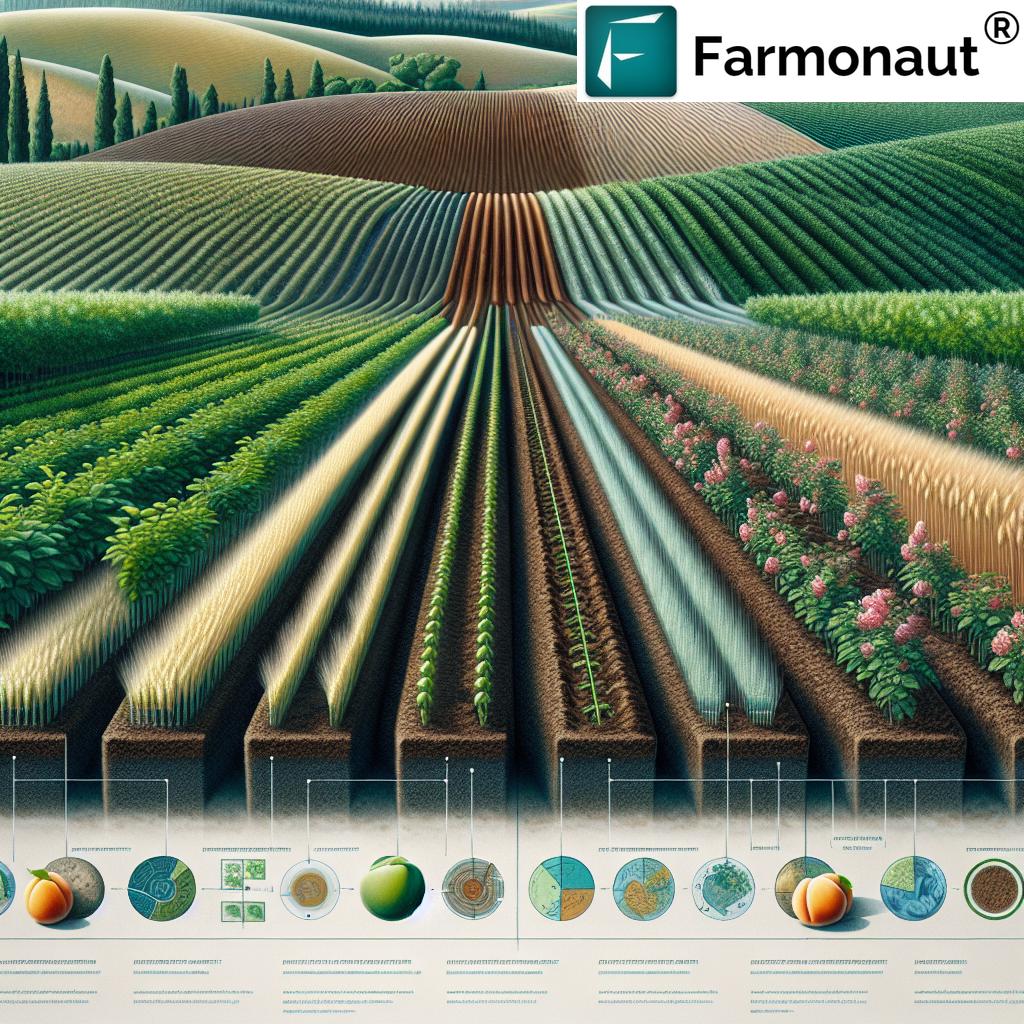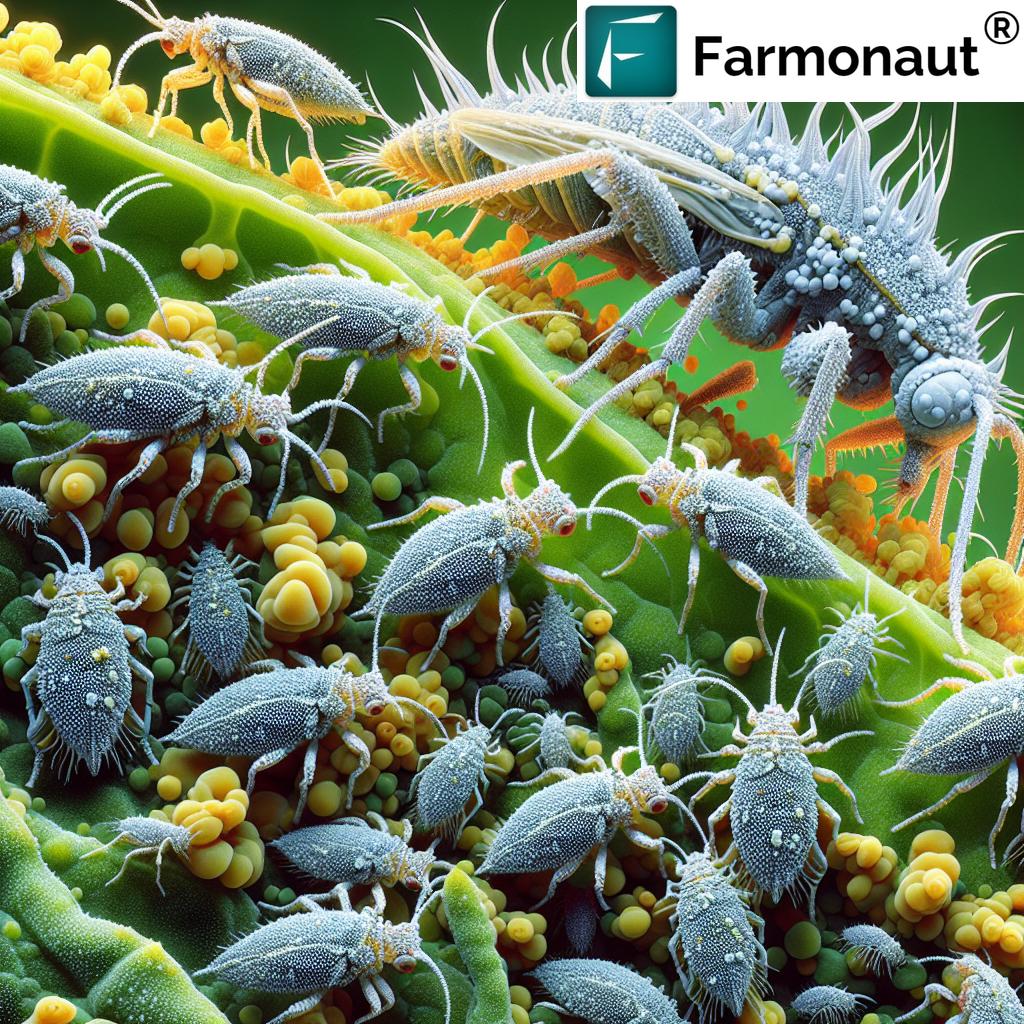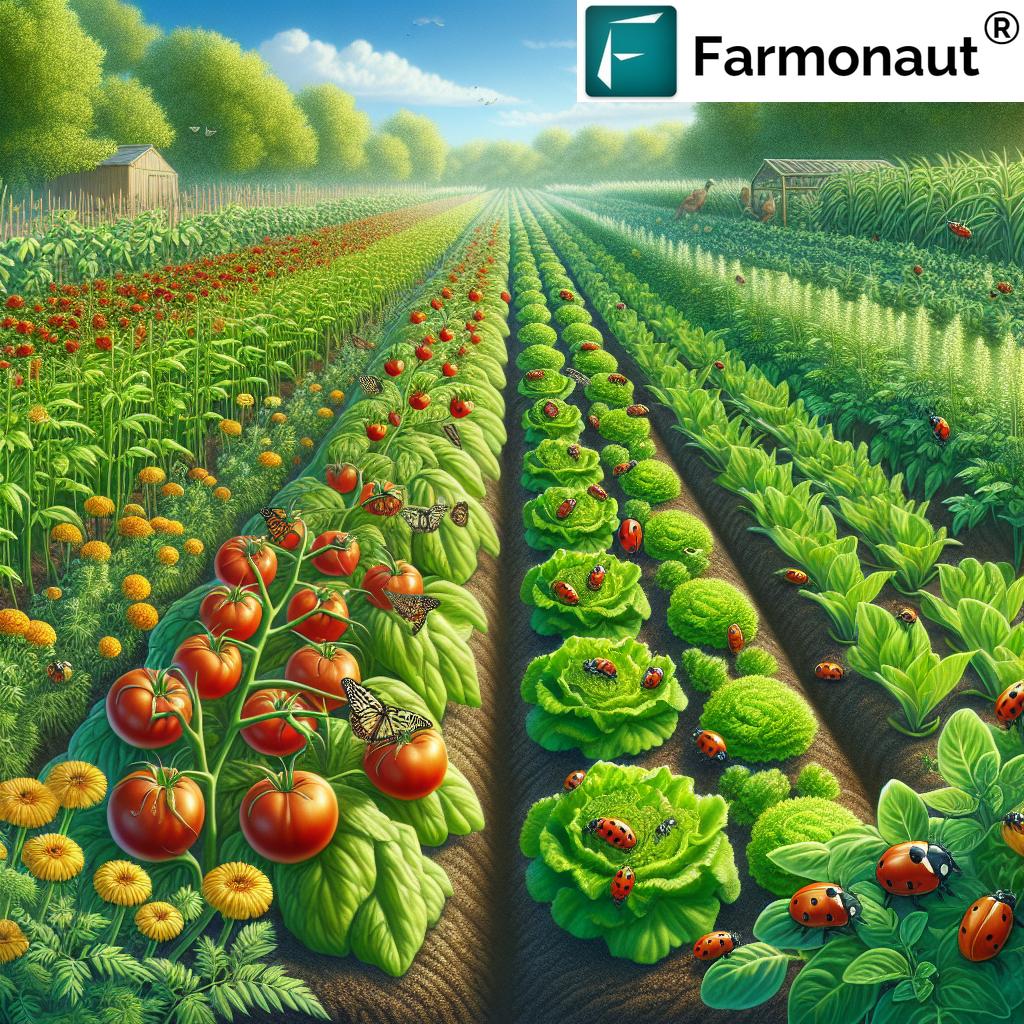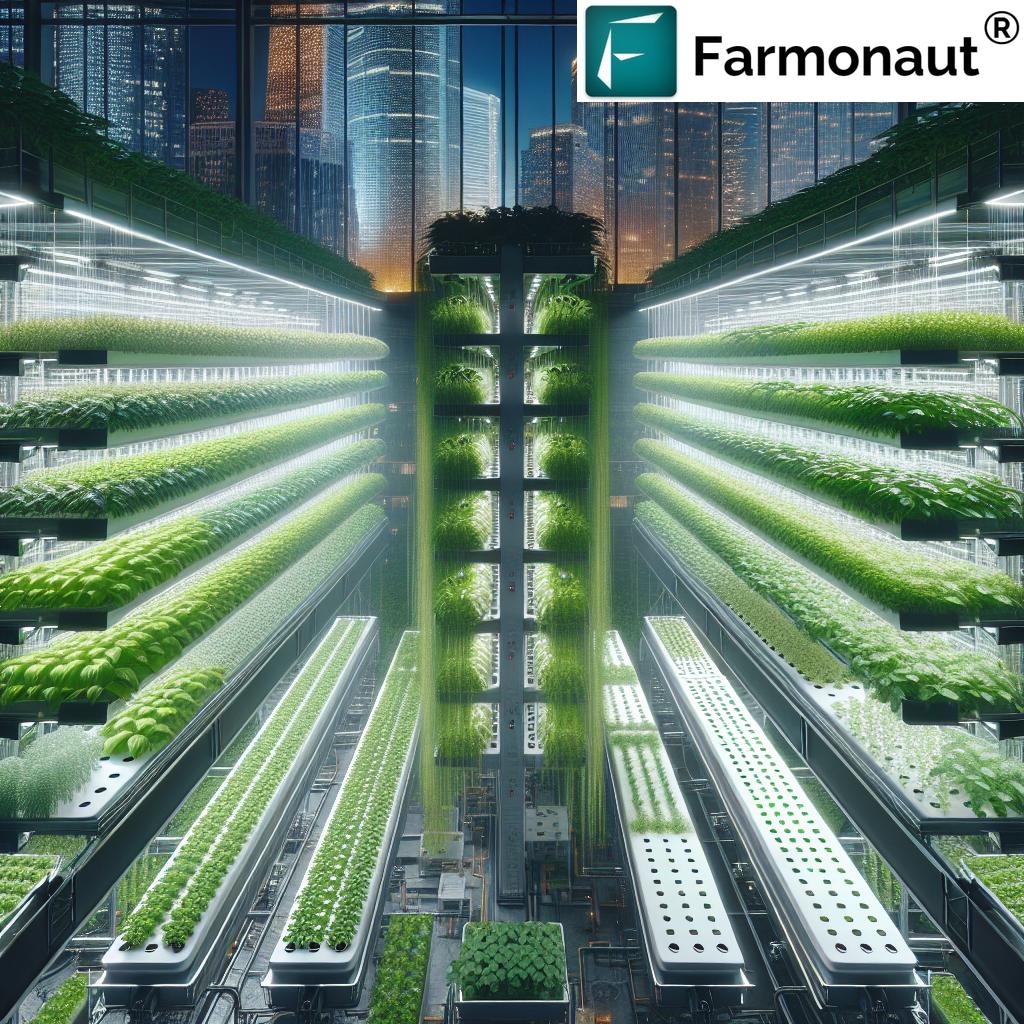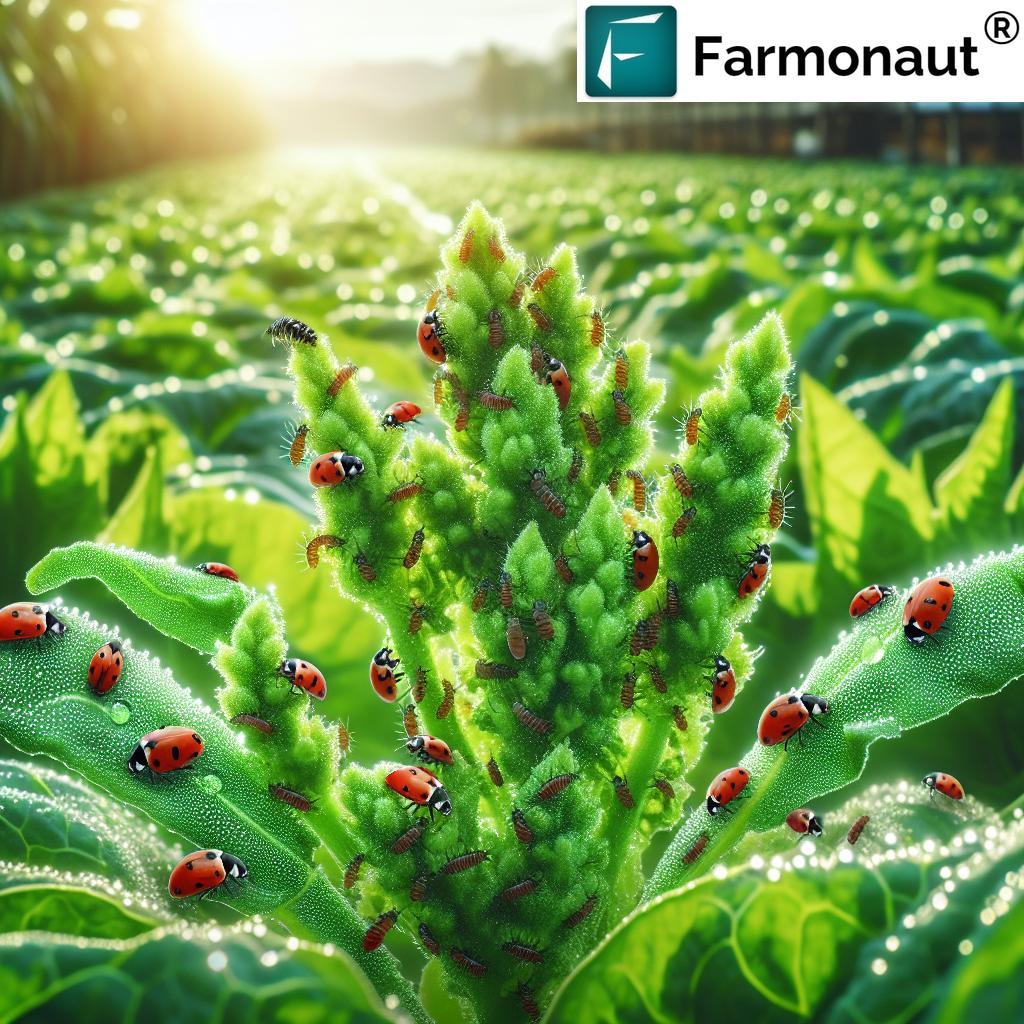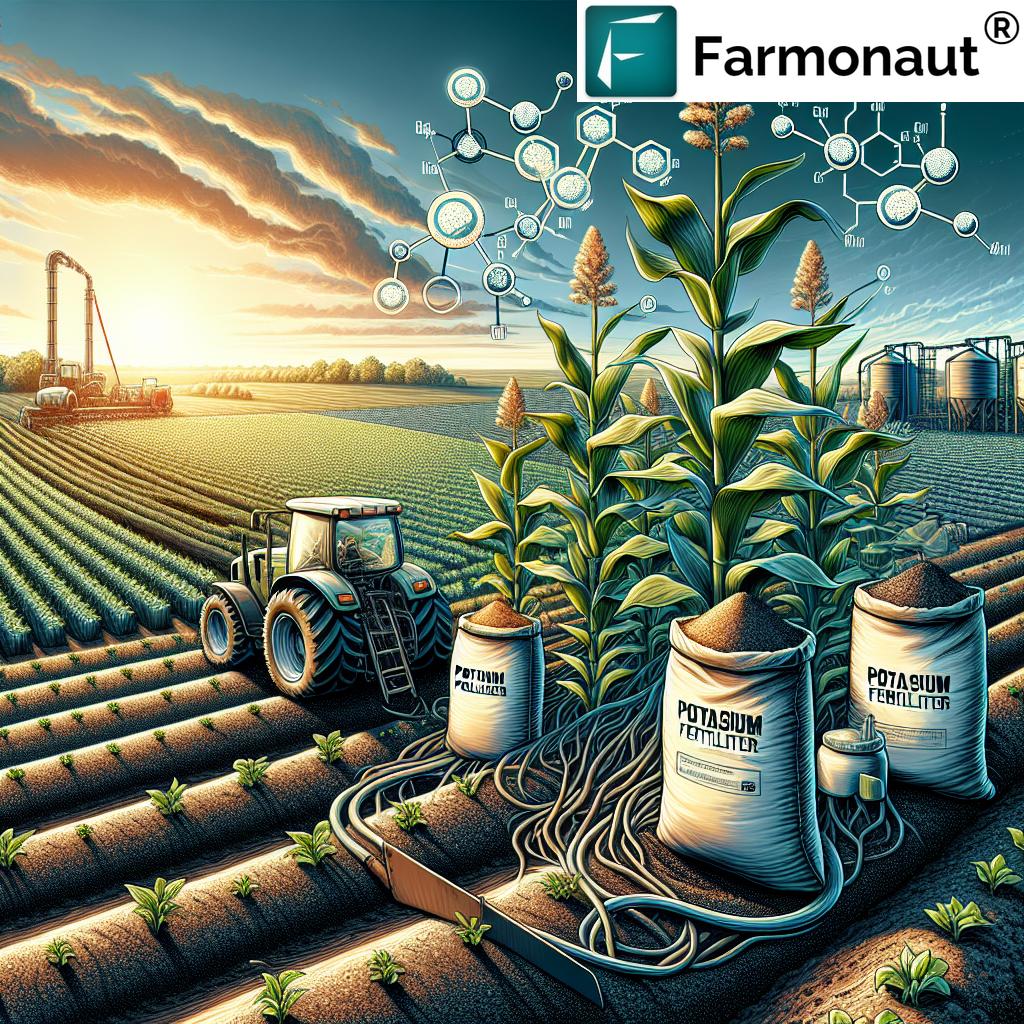Climate Friendly Agriculture: 7 Sustainable Practices
“Over 70% of freshwater worldwide is used for agriculture, making water conservation vital for sustainable farming.”
Climate change is reshaping agriculture across the globe. As temperatures rise, rainfall patterns shift, and extreme weather events like droughts and floods become increasingly common, farmers and food systems everywhere must adapt. Climate-friendly agriculture, rooted in sustainable practices, is critical to safeguard our food supply, boost yields, enhance soil health, and protect the environment for future generations. In this comprehensive guide, we explore seven essential sustainable practices proven to mitigate the impacts of climate change on agriculture, focusing on soil health management and water conservation in farming. We’ll also highlight the roles of precision agri-tech, such as Farmonaut, in transforming climate resilience on farms worldwide.
Impacts of Climate Change on Agriculture
Agriculture is extremely sensitive to climate variability.
Changing temperature patterns, shifting precipitation, and more frequent extreme weather events pose a direct threat to crop yields, soil health, and essential resources like water. Understanding these challenges is the first step toward developing sustainable solutions for our food systems.
- France (2024): Unprecedented spring and early summer rainfall slashed winter crop production by 30-40% across wheat, vineyards, and apricots (Le Monde).
- Nigeria’s Sokoto State: Rivers dried up from prolonged drought made irrigation difficult, spurring food insecurity affecting over 31 million people nationally (AP News).
These examples underscore the urgent need for climate-friendly agricultural practices that enhance resilience against unpredictable weather events and improve the sustainability of food production.
Principles of Climate-Friendly Agriculture
Climate-friendly agriculture embraces sustainability while making farms more resilient. Key principles include:
- Conservation Agriculture Methods: Minimize soil disturbance, maintain permanent soil cover, and diversify crops to improve soil health and reduce erosion.
- Agroforestry Benefits: Integrate trees and shrubs with crops/livestock for biodiversity and carbon sequestration.
- Precision Agriculture Techniques: Leverage data, satellite imagery, and smart tech to make resource use efficient while minimizing environmental impact.
- Soil Health Management: Build and maintain rich, living soils to boost production and climate resilience.
- Water Conservation in Farming: Employ efficient irrigation and water-saving methods to address rainfall changes and scarcity.
- Integrated Pest and Nutrient Management: Use ecosystem-friendly approaches to manage pests and optimize nutrients with minimal chemical use.
- Crop Diversification and Rotation: Rotate and mix crops for healthier soils, pest management, and reduced climate risks.
“Sustainable soil management can increase crop yields by up to 58% while reducing greenhouse gas emissions.”
Summary of Climate-Friendly Agricultural Practices
| Practice Name | Description | Estimated GHG Reduction (%) | Estimated Water Savings (%) | Soil Health Impact | Suitability (Crop/Region) |
|---|---|---|---|---|---|
| Conservation Agriculture | Reduces tillage, covers soil, and diversifies rotations to minimize erosion and improve resilience. | 25–40% | 15–25% | High | Cereal crops; global temperate & tropical zones |
| Agroforestry | Combines trees/shrubs with crops and/or livestock to boost carbon capture and biodiversity. | 15–40% | 20–30% | High | Diverse crops; suitable for Africa, Asia, Latin America |
| Precision Agriculture | Uses smart technology for targeted irrigation, fertilization & monitoring to maximize efficiency. | 20–28% | 35–45% | Medium | Row crops, high-value crops; adaptable globally |
| Soil Health Management | Builds organic matter, supports microbiota, and prevents degradation with thoughtful practices. | 18–35% | 10–20% | High | All crops; globally important |
| Water Conservation | Implements efficient irrigation and rainwater harvesting to adapt to changing rainfall. | 5–20% | 40–60% | Medium | Rice, wheat, maize, fruits, regions with water scarcity |
| Integrated Pest & Nutrient Management | Combines eco-friendly pest control and balanced nutrient strategies. | 10–25% | 5–10% | Medium | Vegetables, cereals; suitable worldwide |
| Crop Diversification & Rotation | Alternates crops and includes legumes to disrupt pests and enrich soil. | 12–22% | 8–15% | High | All farm types & climates |
1. Conservation Agriculture Methods
Key Climate-Friendly Agricultural Practice for Sustainability
Conservation agriculture (CA) is a climate-smart method that enhances productivity and protects the environment. Its core principles are:
- Minimum soil disturbance: No-till or reduced tillage practices prevent soil erosion, conserve soil structure, and reduce carbon loss.
- Permanent organic soil cover: Using cover crops, straw mulches, or crop residue shields the soil from rain, wind, and sun, boosting water retention and suppressing weeds.
- Diversified crop rotations: Multiple crop species in rotation disrupt pest cycles, enhance nutrient cycling, and build resilience.
Benefits:
- Enhances soil health and structure, promoting increased yields over time.
- Reduces greenhouse gas emissions by increasing soil organic carbon and minimizing fuel use from plowing.
- Prevents topsoil loss and erosion, crucial after heavy rainfall or extreme weather.
- Improves water retention, sustaining crops during dry spells.
Adoption of conservation agriculture is now widespread in both developed and developing regions, including areas impacted by erratic weather, such as France and Nigeria’s Sokoto state.
For large-scale farm or plantation managers aiming to monitor hundreds of hectares efficiently, Farmonaut’s Large Scale Farm Management dashboard provides satellite-based monitoring, crop health insights, and resource planning—all in one place—ideal for implementing conservation agriculture at scale.
2. Agroforestry Benefits for Climate-Friendly Agriculture
Agroforestry combines trees, crops, and sometimes livestock on the same land—enriching ecosystem health and boosting farm resilience.
- Enhanced Biodiversity: Introducing woody plants provides habitat for beneficial insects, pollinators, and wildlife.
- Improved Soil Fertility & Health: Deep-rooted trees loosen hard soils, cycle nutrients to the surface, and generate organic litter.
- Carbon Sequestration: Trees absorb atmospheric carbon and store it in roots, trunks, and soil, reducing overall emissions.
- Water Conservation: Tree canopies reduce evaporation, shade crops, and control run-off.
- Economic Diversification: Farmers can earn from timber, fruits, nuts, honey, or medicinal products beyond traditional crops.
Agroforestry is especially valuable in tropical regions (like Nigeria’s Sokoto state), arid zones facing water scarcity, and in French vineyards seeking climate adaptation.
For mixed cropping and forestry projects, Farmonaut’s Crop, Plantation & Forest Advisory delivers actionable AI-driven advice and satellite monitoring—powerful for planning, managing, and tracking agroforestry outcomes.
3. Precision Agriculture Techniques and Digital Farm Management
Harnessing Technology for Sustainable Agriculture
Precision agriculture leverages technology to gather and analyze data for smarter, more sustainable farming decisions. Key tools include:
- Satellite imagery: Track crop growth, health, and potential stress before they become visible in the field.
- Remote sensing & IoT sensors: Monitor soil moisture, microclimate, and pest outbreaks in real time.
- Data analytics & AI: Translate complex farm data into actionable insights (e.g., ideal irrigation times, detecting disease outbreaks early).
- GPS-guided equipment: Reduce waste by applying water, fertilizer, or nutrients only where needed, minimizing environmental footprint.
Benefits:
- Optimizes resource use, thus reducing input costs and waste.
- Boosts productivity and enhances the sustainability of agriculture by improving yields sustainably.
- Supports real-time adaptation to climate impacts and changing weather patterns.
Farmers and agribusinesses seeking affordable precision technologies should consider Farmonaut. Our platform delivers:
- Real-time crop health monitoring using advanced satellite data (See our management app).
- AI-based weather and resource advisory with actionable farm-specific recommendations (via Jeevn AI).
- Blockchain-based traceability to assure consumers about the sustainability and authenticity of their agricultural products (Traceability Solutions).
APIs for Tech Integration: Integrate real-time satellite and weather data into your custom agriculture platforms using our Farmonaut API and detailed Developer Documentation.
4. Soil Health Management for Sustainable Agriculture
Healthy soils underpin sustainable agriculture and are a key defense against the impacts of climate change on agriculture. Here’s why robust soil management matters:
- Crop Rotation: Alternating between cereals, legumes, and other crops balances nutrient use and disrupts pest cycles.
- Organic Fertilizers: Compost, manure, and green manures enrich soils, stimulate soil biology, and add organic carbon.
- Minimal Disturbance: Reduce tillage to avoid breakdown of soil structure and microbiome.
- Cover Cropping: Plants like clover or vetch grown in off-seasons suppress weeds, recycle nutrients, and boost soil fertility.
- Soil Moisture Management: Mulching and retention practices reduce evaporation and make the most of available water.
Outcomes: These practices improve soil fertility, nutrient cycling, resilience against weather extremes, and long-term crop productivity.
Monitoring soil health also connects to carbon management. Discover how our Carbon Footprinting tools help you quantify and reduce agricultural emissions—aligning with global sustainability standards while improving farm resilience.
5. Water Conservation in Farming
With 70% of the world’s freshwater devoted to agriculture, water conservation in farming is vital, especially as drought and irregular rainfall become more common. Key methods include:
- Drip and Micro-irrigation: Precisely delivers water to the plant root zone, reducing waste (especially in arid areas like Nigeria’s Sokoto state).
- Rainwater Harvesting: Collects and stores seasonal rains for use during dry periods—critical where rivers have dried up.
- Mulching: Keeps soil covered, decreasing evaporation and moderating soil temperature.
- Timing and Scheduling: Use weather and soil moisture data to irrigate only when and where needed, as enabled by digital advisory platforms.
These techniques support food production stability in regions challenged by water scarcity and climate variability, such as France’s wheat fields and Nigeria’s irrigated farms.
Fact: Effective irrigation management and soil moisture monitoring via digital solutions can save farmers up to 60% of irrigation water use.
6. Integrated Pest and Nutrient Management
Integrated Pest Management (IPM) and Integrated Nutrient Management (INM) combine multiple approaches to reduce chemical reliance and environmental side effects.
- Biological Controls: Favoring natural enemies of pests, such as ladybugs or parasitoid wasps.
- Cultural Practices: Adjusting planting dates, crop spacing, and rotations to minimize pest outbreaks.
- Targeted Chemical Use: Application only when monitoring indicates a need, backed by digital scouting and precision ag data.
- Balanced Fertilization: Combine organic and mineral fertilizers based on soil testing for efficient nutrient cycling.
These eco-friendly practices support biodiversity, maintain soil health, and cut greenhouse emissions.
7. Crop Diversification and Rotation
Crop diversification and rotation are foundational to climate-friendly farming. By varying the type and sequence of crops, farmers build resilience against weather events, break pest and disease cycles, and enhance fertility.
- Diversification: Introducing new, climate-appropriate crops (e.g., drought-tolerant legumes or oilseeds) to buffer against yield loss from extreme events or market shifts.
- Rotation: Alternating crops (e.g., wheat with legumes or root vegetables) naturally replenishes nutrients and disrupts pest life cycles.
Farmers practicing advanced rotations and sustainable risk management can benefit from satellite-based crop loan and insurance verification—ideal in volatile regions where food security and climate change are constant concerns.
Benefits of Climate-Friendly Agricultural Practices
The adoption of climate-friendly agricultural practices produces wide-ranging benefits for farmers, ecosystems, and society:
- Enhanced resilience: Sustainable systems are more robust against weather events and erratic rainfall, supporting steady food production.
- Improved food security: Healthy soils, water conservation, and diversified crops help to guarantee food availability even during drought, floods, or market shocks.
- Environmental sustainability: These practices promote biodiversity, build natural carbon sinks, and protect water and land resources for future generations.
- Economic gains: Reduced dependency on external inputs (chemicals, fuel) and new income streams improve farmer profitability.
- Market access: Traceable, sustainably produced products are increasingly in demand among consumers—enabling value-added production.
Challenges and Considerations in Adopting Sustainable Practices
Key Barriers to Climate-Friendly Agriculture Adoption
- Knowledge and Education: Many farmers lack awareness or training in sustainable practices and digital tools. Extension services and accessible apps are crucial for change.
- Access to Resources: Investments in technology, seeds, and alternative inputs may be unaffordable for smallholders without targeted support.
- Policy Support: Governments and NGOs play a critical role in incentivizing adoption via subsidies, demonstration projects, and sustainable procurement.
- Market Demand: Real change occurs when consumers value and seek out sustainably produced products, providing price premiums and steady demand.
Addressing these barriers requires collective action—from creating supportive policy environments to building consumer trust with traceability, education, and digital empowerment.
Connecting farm to fork: Our Product Traceability Solution uses blockchain to deliver tamper-proof data on the origin, quality, and sustainability of food products—building credible trust for both farmers and consumers.
How Farmonaut Supports Climate-Friendly Agriculture
At Farmonaut, our mission is to make precision agriculture affordable and accessible worldwide. We recognize that the next agricultural revolution depends on data-driven, climate-friendly practices scaling out everywhere—from the wheat fields of France to the riverside farms of Sokoto state.
Here’s how our digital tools and solutions empower climate-friendly agricultural practices:
- Satellite-Based Farm Management: Monitor crop health, soil moisture, pest outbreaks, and yield risks for targeted, timely interventions. This supports smarter fertilization and irrigation.
- AI Advisory with Jeevn: Receive personalized climate-smart recommendations for practices like rotation, mulching, or resource management—adapted to current weather events and local crop cycles.
- Blockchain Traceability: Document and prove sustainably produced products from the field to the market.
- Carbon Footprinting: Track farm-level emissions and document improvements in soil carbon sequestration to meet environmental standards.
- Fleet Management: Optimize logistics, minimize fossil fuel use, and increase economic viability of farm operations (Fleet Management Solution).
- Flexible Access: Use Farmonaut on Android, iOS, or the web—wherever connectivity is available and farm decisions are being made.
Integrating Farmonaut into modern farming systems means empowering farmers everywhere to improve yields sustainably, mitigate climate impacts, and protect essential resources for future generations.
Farmonaut Subscription Plans
Choose a plan that fits your agricultural ambitions—whether you’re a smallholder, agribusiness, research institution, or government agency. Fast, flexible, and designed for all scales.
Frequently Asked Questions
What are climate-friendly agricultural practices?
These are farm management approaches that reduce environmental impacts, build resilience to weather and climate change, and optimize natural resource use for sustained crop productivity.
Why is soil health management important for sustainable agriculture?
Healthy soils supply nutrients, retain water, and store carbon—supporting higher yields and climate resilience while reducing the need for chemical inputs.
How does Farmonaut improve water conservation in farming?
Farmonaut provides real-time satellite-guided irrigation advisories, soil moisture maps, and weather forecasts to enable efficient watering while reducing waste—especially vital in water-scarce regions.
Can these practices work in regions facing severe food insecurity, like Sokoto in Nigeria?
Yes. Conservation agriculture, water harvesting, and digital crop health tools are especially effective in areas with erratic rainfall or severe drought. They stabilize yields, cut water reliance, and reduce the risk of crop failure.
Do consumers benefit from sustainably produced agricultural products?
Absolutely. Not only can sustainably produced food be healthier and more trustworthy (through traceability), but its increased demand also offers farmers price premiums and encourages widespread adoption of climate-friendly agriculture.
How do I access Farmonaut’s satellite monitoring and advisory services?
Download the Farmonaut App from the Google Play Store or Apple App Store, or use our web platform.
Conclusion
The impacts of climate change on agriculture are already being felt worldwide—from France’s rain-soaked wheat and vineyards to Nigeria’s Sokoto state facing dried-up rivers and water scarcity. This makes climate-friendly agricultural practices not just a sustainability ideal, but a necessity for ongoing food security, rural livelihoods, and planetary health.
Through a combination of conservation agriculture, agroforestry, precision agriculture techniques, soil health management, water conservation in farming, integrated pest/nutrient practices, and crop diversification and rotation, we can mitigate climate impacts and promote sustainable agriculture globally.
The path forward requires overcoming barriers in education, access to digital resources, supportive policy, and market demand for sustainably produced products. Technologies like those from Farmonaut bring powerful, actionable insights within reach for every farmer, enhancing on-farm resilience and building tomorrow’s sustainable food systems.
Join the climate-smart agricultural revolution! Harness advanced technology, embrace data-driven farming, and secure a resilient, thriving agricultural future for all.



